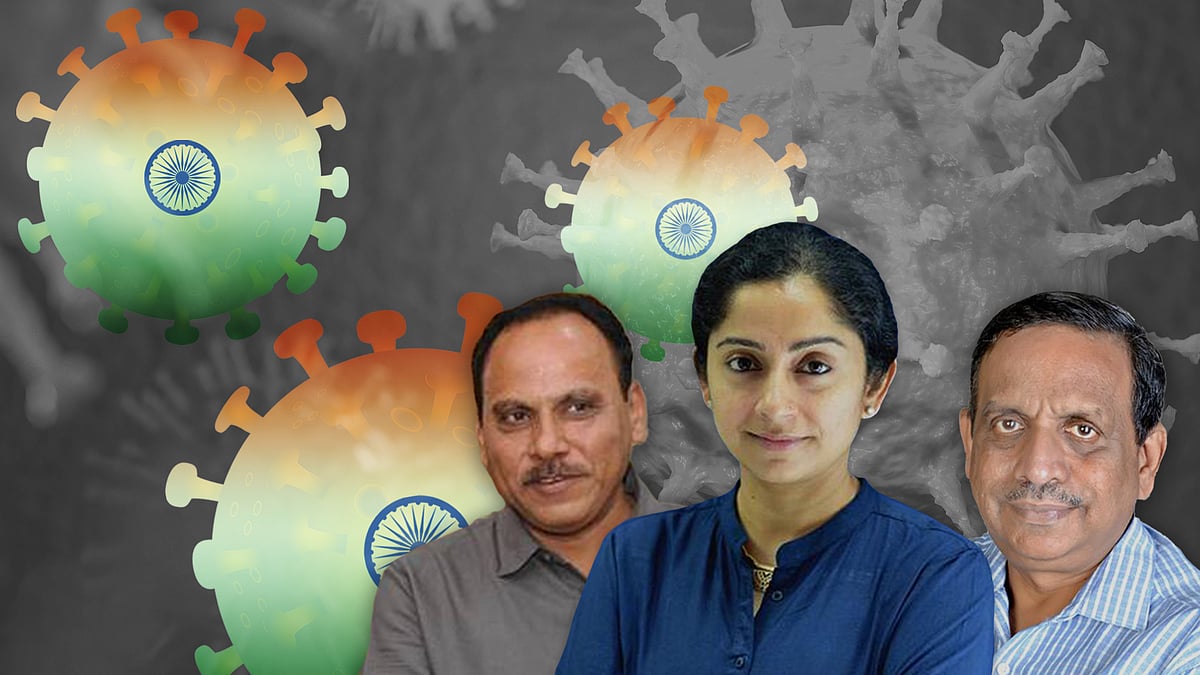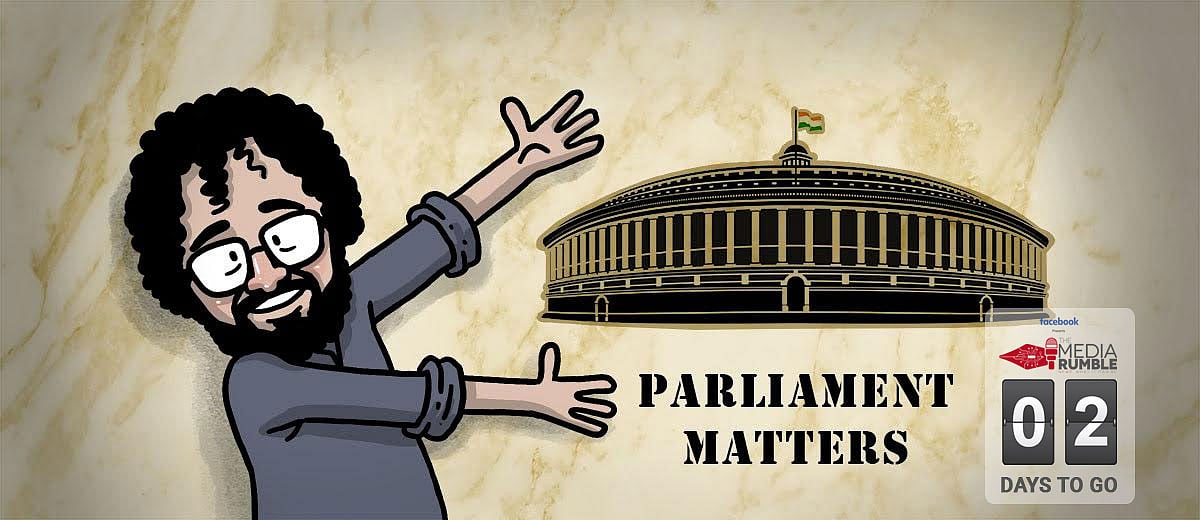India is in a crisis. Why isn’t the parliament assembling online?
There’s no constitutional bar against holding a virtual session.
India has shut down, and a prime ministerial edict has directed Indians to maintain a degree of separation. Suddenly, working from home, in rotation, and through videos and emails is in vogue. White-collar employees are braving a rickety IT infrastructure to satisfy employers’ demands. State governments are implementing rota to keep offices open but employees separated. Even the dawdling Supreme Court is flirting with technology. It has initiated virtual courts and plans apparently are afoot to achieve paperless briefs and e-judgments.
One institution, though, has chosen to shut rather than follow suit: the parliament. Originally slated to run until April 3, 2020, the budget session of the parliament was slashed by two weeks. Accordingly, on March 23, curtain fell on both its Houses.
Globally, several legislative chambers stayed open well into the coronavirus crisis. The British House of Commons, German Bundestag, and European Parliament functioned until recently. Some still remain open with readjusted seating plans to obey social distancing protocols. America’s Congress, too, has been in business, enacting the largest economic stimulus package in its history. Days before the vote, two senators argued for modifying Senate rules to allow members to vote remotely. Can Indian legislatures go further – and summon digital sessions?
Inspecting the constitution for guidance is the obvious starting point. But that lengthy document is reticent about parliamentary procedures. Still, it offers a few useful bits. Article 85 empowers the president to “summon each House of Parliament to meet at such time and place as he thinks fit”. Article 118 grants each House the discretion to frame rules to regulate “its procedures and the conduct of its business”.
The Lok Sabha created the Rules of Procedure and Conduct of Business to govern its proceedings. Sample two rules. Rule 11 reads: “A sitting of the House is duly constituted when it is presided over by the Speaker...” Rule 156 says: “Amendments to clauses or schedules shall be decided by a majority of members present and voting in the same manner as in the case of any other Bill.”
Neither the constitution nor the rules compel MPs to literally congregate in the Houses in New Delhi. Instead, when and where MPs must assemble is left to the president’s discretion. The rules, too, say the same: sittings are “duly constituted” when speakers preside. But they may preside anywhere. The Houses aren’t a site, a physical location; rather, they are an idea. The Houses may assemble physically as they have done thus far. Or, they may convene online if the president so decides.
The link between the parliament’s physical location and its proceedings isn’t a new issue. In April 1999, the regional party AIADMK withdrew its support to Atal Bihari Vajpayee’s National Democratic Alliance ministry. National politics plunged into chaos. Unsure of the government’s majority in the Lok Sabha, President KR Narayanan directed Vajpayee to take a confidence vote. Tottering on the edge, the government strained to corral every vote it could find.
Vijayaraje Scindia, a senior leader of the BJP, was hospitalised. Vajpayee dispatched his trusted lieutenant, Pramod Mahajan, to negotiate with the opposition. His plea: allow Scindia to vote from her hospital bed. An ungracious opposition, led by the Congress, declined the request. Only members physically in the House, they insisted, could partake in the proceedings. So, in the late hours of April 17, 1999, a frail Scindia was assisted into the Lok Sabha to record her vote. (It didn’t help. The government lost the confidence motion by one vote.)
More recently, crude machinations in Arunachal Pradesh prompted questions about the legislature’s place and its proceedings. On December 9, 2015, ignoring established political conventions, Governor Jyoti Prasad Rajkhowa, summoned the State Assembly to session six days later. Chief Minister Nabam Tuki and Speaker Nabam Rebia – brothers by blood and in politics – rebuffed the governor’s move.
On December 15, Tuki ordered the assembly gates locked. Opposition and rebel MLAs who showed up were turned away. So, 33 MLAs – a majority in the 60-seat Assembly – gathered at a community hall and enacted a motion removing Rebia as the speaker. Next day, they congregated at a hotel under a new speaker, passed a motion, and voted out the Tuki government. Implicit in this bizarre turn of events was a simple idea: formalities, not the place, validate legislative proceedings. (In July 2016, the Supreme Court declared the governor’s actions unlawful, and reinstated the Tuki government. The reinstated government, however, did not last; Tuki resigned hours before a vote of confidence.)
The Scindia and Tuki affairs were oddities. Ordinarily, legislative business is conducted in designated chambers. But that is a practice – not a legal obligation. Other branches of government exemplify this de-link between the place and its proceedings better.
Consider courts. Judges may hear matters anywhere, not just inside courtrooms. A court is wherever a judge sits. That explains why urgent, midnight hearings are possible. As parts of Delhi burned with communal rage last month, Justice S Muralidhar (then in the Delhi High Court) conducted late-night hearings at his residence, directing the police and ambulances to aid the victims. Supreme Court judges, too, have called a court to order in their homes. Only proceedings matter, not the place.
Clearly, the parliament can summon a digital session. But should it?
In our representative democracy, MPs have three roles: they hold the government to account for its policies; draw its attention to matters of local and national importance; and legislate. Social media, direct, personal, and prompt, can deliver on the first two.
Indians often approach – or target – ministers and officials on Twitter, Facebook, Instagram and like platforms. Still, the parliament commands a solemnity that social media conversations do not. Besides, those proceedings are official records in ways that Facebook and Twitter exchanges are not.
Consider the abrupt shutdown of a billion plus people. With an air of regal authority, Prime Minister Narendra Modi accorded Indians four hours to reorder their lives into invisibility. It was political theatre par excellence – a throwback to his demonitisation speech in November 2016. And once again, it unleashed apocalyptic levels of misery on people, especially the daily wage earners. Jobless overnight, anxious and famished, millions of migrant workers, in northern India and elsewhere, found themselves imprisoned in the open. Uncounted many set off for their native lands, lumbering long distances on foot. More than a dozen have perished in this Great Indian Homecoming.
A week after he decreed the shutdown, Modi voiced a rare, if qualified, regret. Workers’ agony made him heavyhearted, he told listeners of his weekly address, but the decision, he insisted, was necessary.
The wry plan and its wretched implementation have invited scrutiny from the media, both mainstream and social. But these accounts are no substitutes for parliamentary proceedings. The opposition should be able to challenge the government directly “in the House”. That is what the parliament is for: to challenge (policies), demand (explanations), and archive (responses and regrets).
On March 31, the Supreme Court held a virtual court on the fate of migrant workers. Fake news, not feeble planning, had tossed their lives into turmoil, the court hinted. The appropriate remedy: a responsible media that avoids “unverified news capable of causing panic”. Instead, it must publish “the official version of developments” – a daily bulletin by the Government of India, the Chief Justice directed.
Blaring the master’s voice as the one – only – true account of the pandemic heightens the need for the parliament to be in session. The court can still muzzle an alert media; it can’t suppress dissenting MPs. But the two Houses are not in action; they vacated when they were most needed. They must return.
India has – or must have – enough technological sleight to enable 500-odd MPs to assemble online. The Rajya Sabha has a far smaller cohort. Besides, digital sessions will command greater order than the offline ones. MPs, after all, cannot assay their peculiar parliamentary obsessions: descend on the well of the Houses, sloganeer, or interrupt members.
Covid-19 is an emergency – one that may dissipate shortly. But future emergencies may lock India into longer periods of disruption. Privileged Indians are experimenting with new forms of working. MPs should do the same. Digital legislative sessions are possible: The laws and technology already exist. The missing link is a desire to innovate. Speakers, chairpersons, and MPs should demonstrate more of that.
Shubhankar Dam is a Chair Professor of Public Law and Governance, University of Portsmouth, United Kingdom.
 ‘We’re flying blind’: Indian experts predict how the coronavirus pandemic will pan out
‘We’re flying blind’: Indian experts predict how the coronavirus pandemic will pan out
 Reporting on Parliament: Why we need constant vigilance
Reporting on Parliament: Why we need constant vigilance